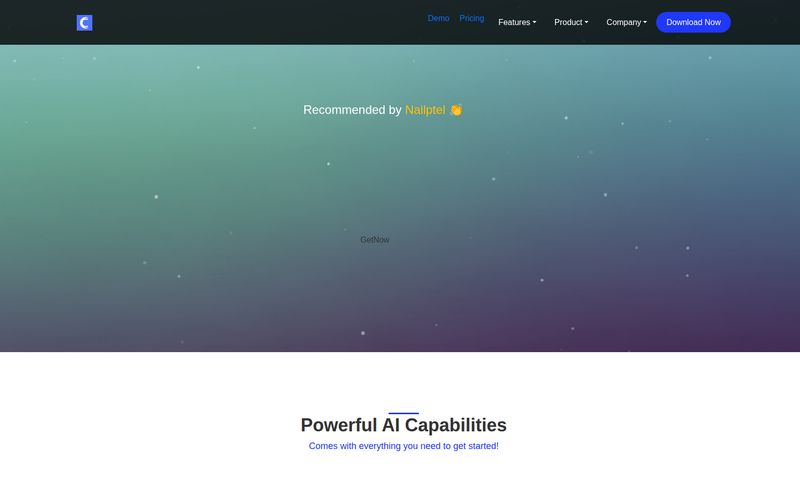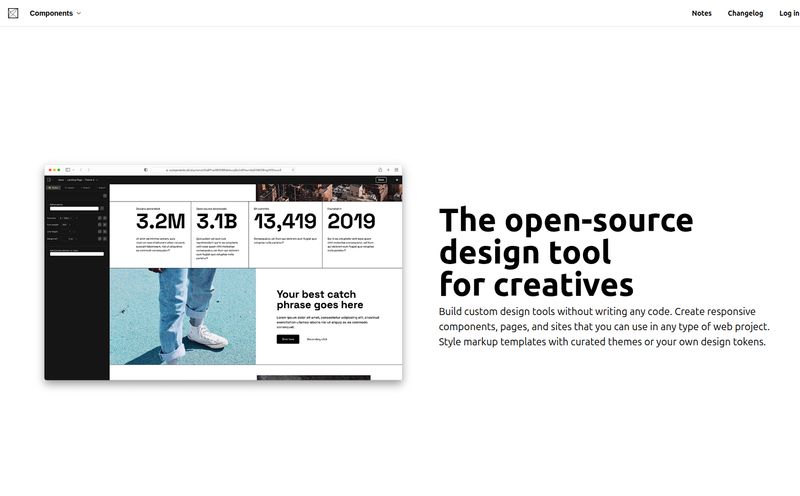If you've spent any time in the property development or investment game, you know the grind. The endless hours scrolling through real estate listings, the mind-numbing council websites, the spreadsheets... oh god, the spreadsheets. You build complex models to figure out if a site is even remotely viable, all while a nagging voice in your head whispers,
What if I missed something?
I’ve been there. I remember one project, a potential duplex site, that looked golden on paper. I spent weeks, literal weeks, on due diligence. Then, at the eleventh hour, discovered a tiny note in a 200-page planning document about a water main easement. Project dead. All that time, gone. It's the kind of gut punch that makes you question your life choices.
So when a tool like Archistar comes along, waving its shiny "AI-Powered" banner, my inner cynic and my inner optimist get into a fistfight. The optimist sees a future without those soul-crushing spreadsheets. The cynic sees another expensive subscription. So, I decided to put my blogger hat on and really look at what this platform is all about. Is it the future of property development, or just another clever gimmick?
So, What is Archistar, Really?
Let's cut through the marketing fluff. Archistar bills itself as an AI-powered platform for finding and assessing property development sites. Think of it less as a simple search engine and more like a Swiss Army knife for developers. It's designed to help you with three core things: finding profitable land, figuring out if you can actually build on it (feasibility), and then—this is the cool part—generating potential architectural designs to see what's possible.
It’s not just about raw data. We've had data platforms for years. This is about synthesis. It’s like having a junior data analyst, a draftsperson, and a town planner all rolled into one digital assistant, ready to work 24/7. That's a powerful concept.
The Features That Genuinely Caught My Eye
A long feature list is one thing, but what actually moves the needle in your day-to-day workflow? After digging around, a few things stood out to me as being particularly transformative.
AI Site Finding Isn't Just a Filter
We’ve all used filters on real estate sites. '3 bedrooms, 2 baths, big backyard.' Archistar’s approach is different. It’s not just about what a property is, but what it could be. You can search for sites based on development potential, like finding all the lots in a suburb that are zoned for medium-density housing but currently only have a single old house on them. This shifts the process from being reactive to proactive. You’re not waiting for opportunities to pop up; you’re hunting them down with a guided missile.
Generative Design: Visualising the Dream (or Nightmare) Instantly
This is the feature that feels like it’s straight out of science fiction. You identify a site, and Archistar’s AI can generate dozens of 3D massing concepts that comply with local planning rules. Think apartment blocks, townhouse clusters, you name it. It's not about creating the final, beautiful architectural renders. Not at all. An architect’s job is safe, trust me. Its purpose is to give you an immediate visual answer to the question:
What can I roughly fit on this block?
This is huge for early-stage feasibility. Instead of paying an architect thousands for initial blockouts, you can get a feel for yield—how many units, total floor area, etc.—in minutes. It’s a sanity check on steroids.

Visit Archistar
Cutting Through the Bureaucratic Jungle with Compliance Tools
As I mentioned with my war story, navigating government regulations is the bane of every developer's existence. The Archistar eCheck feature, which seems to be a focus for their work with municipalities, is a step in the right direction. It digitizes the process of checking plans against council rules. For a developer, having a tool that can flag potential height limit breaches or setback issues before you’ve even lodged a DA… that’s not just a time-saver, its a massive risk-reducer. It turns the opaque rulebook into a checklist you can tick off as you go.
Let’s Talk Money: The Archistar Pricing Structure
Okay, the million-dollar question. Or in this case, the several-hundred-dollars-a-month question. No tool is great if you can’t afford it. Looking at their pricing page, Archistar has a tiered system, which is pretty standard for SaaS platforms. As of my last check, it breaks down something like this (prices are often billed annually for the best rate, so keep that in mind):
| Plan | Price (per month, approx.) | Best For |
|---|---|---|
| Basic | ~$79 | Small projects, research in a single state. |
| Professional | ~$288 | Full-time developers or firms operating in one state. |
| National | ~$496 | Large firms or investors working across Australia. |
Disclaimer: Prices change! They were even running a special when I looked. Always check their official pricing page for the most current numbers.
So, is it worth it? For the hobbyist doing one project every five years, probably not. But for a small development firm, that Professional plan could pay for itself by helping you avoid one bad site or find one great one. You have to weigh the cost against the time you'd save and the mistakes you'd avoid. A single consultant's report can cost more than a month's subscription.
The Good, The Bad, and The AI-Generated Reality
No review is complete without a balanced look. In my experience, even the best tools have their quirks. Archistar is incredibly powerful, streamlining what used to be weeks of work into a single afternoon. The ability to layer data—zoning, utilities, sales history—and then generate a design concept is a massive advantage. You can assess more deals, faster. That’s the undeniable good.
But let's be real. The price can be a hurdle, especially for those just starting out. And the biggest caveat of all? You still need your brain. The AI is a co-pilot, not the pilot. Its suggestions are based on data, and the accuracy of that data is only as good as the sources it comes from (councils, state governments etc.). You can't blindly trust an algorithm with a multi-million dollar decision. You still need to do your own final checks and bring your own market knowledge to the table. The AI can tell you what's permissible, but you need to know what's profitable and desirable.
So, Who Is This For?
After all this, who should seriously consider opening their wallet for Archistar?
- Small to Medium Property Developers: This is the sweet spot. The efficiency gains here are massive.
- Architects & Town Planners: Perfect for speeding up the initial feasibility and concept design stages for clients.
- Ambitious Property Investors: For those looking to scale up and find unique, off-market development opportunities.
Who is it probably NOT for? The first-time home buyer or the casual investor looking for a single rental property. The toolkit is just overkill for that. You don't need a sledgehammer to hang a picture frame.
Frequently Asked Questions about Archistar
What can you actually do with a free Archistar account?
The free account is more of a taster. It typically gives you very limited access to explore the platform's interface and maybe run a few basic property reports. To get into the powerful site-finding and generative design features, you'll need one of the paid subscriptions.
How accurate is the data? Can I trust it completely?
Archistar pulls data from official sources like government land registries and councils. While generally reliable, these sources can have lags or errors. Think of Archistar's data as 95% of the way there. It's an incredible starting point, but for final sign-off on a major investment, you should always verify critical data points directly with the source authority.
Does Archistar replace the need for an architect or town planner?
Absolutely not. It's a tool to augment their work, not replace it. The AI generates basic massing models for feasibility, not detailed, buildable plans. You still need a qualified architect for design development and a town planner to navigate the complex submission process. Archistar just helps you get to them with a much clearer, data-backed initial concept.
Is Archistar only for Australian properties?
Based on the pricing and the focus on partnerships with Australian councils (like the City of Sydney and various others mentioned on their site), the core platform is heavily geared towards the Australian market. They may have plans to expand, but for now, it's an Aussie-centric tool.
What’s the main difference between the Basic and Professional plans?
The biggest jump is usually in the power of the tools. The Basic plan is often for high-level research and smaller projects, giving you access to site reports. The Professional plan typically unlocks the more advanced features like the full generative design suite, advanced site filtering, and more detailed feasibility analysis—the tools a full-time developer would use daily.
My Final Verdict
So, back to the original question: tool or gimmick? I'm firmly in the 'powerful tool' camp. Archistar isn’t a magic button that prints money, but it is a serious force multiplier. It takes the most tedious, time-consuming parts of property assessment and automates them, freeing you up to focus on the human elements: negotiation, design quality, and making the final call.
The property industry has been slow to adopt tech, but platforms like Archistar are a clear sign that the tide is turning. If you're serious about property development in Australia, ignoring tools like this feels like insisting on using a horse and cart when everyone else is driving a car. It might feel charmingly old-school for a while, but you will get left behind.



